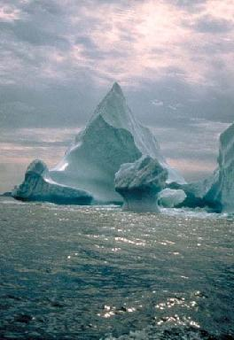NOAA/WDS Paleoclimatology - Late glacial to Holocene sortable silt records from the southwestern Labrador Sea
This archived Paleoclimatology Study is available from the NOAA National Centers for Environmental Information (NCEI), under the World Data Service (WDS) for Paleoclimatology. The associated NCEI study type is Paleoceanography. The data include parameters of paleoceanography with a geographic location of North Atlantic Ocean. The time period coverage is from 21342 to 750 in calendar years before present (BP). See metadata information for parameter and study location details. Please cite this study when using the data.
- Cite as: Hoffmann, S.S.; Dalsing, R.E.; Murphy, S.C. (2019-05-06): NOAA/WDS Paleoclimatology - Late glacial to Holocene sortable silt records from the southwestern Labrador Sea. [indicate subset used]. NOAA National Centers for Environmental Information. https://doi.org/10.25921/536j-qz31. Accessed [date].
- Please refer to Credit tab for full citation information.
- doi:10.25921/536j-qz31
- noaa-ocean-26730
- NCEI DSI 1200_02
- NCEI DSI 1200_01
noaa-ocean-26730
| Search Data |
|
| Download Data |
|
| Distribution Formats |
|
| Ordering Instructions | Contact NCEI for other distribution options and instructions. |
| Distributor | NOAA National Centers for Environmental Information
ncei.info@noaa.gov |
| Dataset Point of Contact | NOAA National Centers for Environmental Information
ncei.info@noaa.gov |
| Dataset Point of Contact | Data Center Contact
NOAA World Data Service for Paleoclimatology 828-271-4800 paleo@noaa.gov |
| Coverage Description | Date Range: 21342 cal yr BP to 750 cal yr BP; |
| Time Period | -19392 to 1200 |
| Spatial Bounding Box Coordinates |
N: 49.244
S: 49
E: -45.017
W: -48.9877
|
| Spatial Coverage Map | |
| General Documentation |
|
| Associated Resources |
|
| Publication Dates |
|
| Data Presentation Form | Digital table - digital representation of facts or figures systematically displayed, especially in columns
|
| Dataset Progress Status | Complete - production of the data has been completed |
| Data Update Frequency | Data update frequency not available |
| Supplemental Information |
STUDY NOTES: Site metadata: KN158-4-27 (49.244 N, -48.9877 W, -1846 m, core length: 2.13); KN158-4-28 (49.2433 N, -48.9872 W, -1828 m, core length: 0.36); V23-18 (49 N, -45.017 W, -1593 m, core length: 4.05) Provided Keywords: sediment grain size, sediment geochemistry
ABSTRACT SUPPLIED BY ORIGINATOR: The Labrador Sea is a vital region for the Atlantic Meridional Overturning Circulation (AMOC), where overflow waters from the Nordic Seas mix with locally produced Labrador Sea Water, before exiting to the interior of the Atlantic Ocean. The dynamical sedimentary proxy of mean sortable silt size (SS) can give information on past changes in deep water circulation speed and the strength of AMOC. We have produced (SS) records from two core sites at depths between 1500 and 2000 m on the continental slope east of Newfoundland, to reconstruct changes in intermediate depth water circulation speed, including Glacial North Atlantic Intermediate Water and Labrador Sea Water over the past 22,000 years. Increases in (SS) appear to coincide with much of the deglaciation as well as the mid-late Holocene. End-member modeling suggests that ice-rafted debris (IRD) is an important factor in interpreting (SS) during the deglaciation. We find that a robust increase in (SS) is likely unrelated to IRD during the past 5 ka, and probably reflects increased flow at intermediate depths due to local production of LSW strengthening as Nordic Seas overflows weakened at this depth. Our results highlight both the complications of producing (SS) records in IRD-rich, slope environments and the promise that this proxy nevertheless has for reconstructing dynamical changes in deep ocean currents. |
| Purpose | Records of past climate and ocean circulation derived from marine sediments. Parameter keywords describe what was measured in this dataset. Additional summary information can be found in the abstracts of papers listed in the dataset citations. |
| Dataset Citation |
|
| Cited Authors |
|
| Originators |
|
| Publishers |
|
| Theme keywords | Global Change Master Directory (GCMD) Science Keywords
|
| Data Center keywords | Global Change Master Directory (GCMD) Data Center Keywords
|
| Place keywords |
|
| Use Constraints |
|
| Access Constraints |
|
| Fees |
|
Last Modified: 2023-09-01
For questions about the information on this page, please email: ncei.info@noaa.gov
